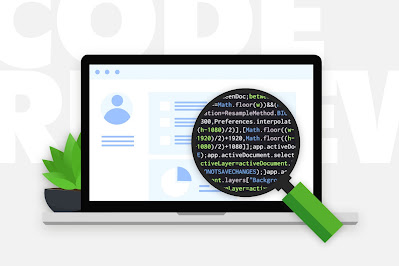10 Tips for Better Code Reviews: A Comprehensive Guide
In this world of software development, code reviews play an important role in keeping the code reliable, sustainable, and secure. Code reviews can be used by developers to share knowledge, share ideas, foster cohesion, and address issues such as violation of code standards and etiquette. However, performing an effective code review is not always easy. It requires skill, time, and a reasonable understanding of the process. This article will discuss ten tips for performing better code reviews, sourced from programmers on Reddit, GitHub, and other indispensable guidelines for effective code reviews.
The Importance of a Code Review Checklist
Having a checklist for code reviews is crucial for large development projects. A code review checklist ensures that the process is systematic and that the reviewer considers all aspects of the code in a consistent manner. Whether the code is in a GitHub pull request or being discussed on Reddit, having a checklist will help ensure that all key items are addressed, such as code standardization, naming conventions, performance issues, and refactoring opportunities.
Keep Code Reviews Manageable
It is recommended that pull requests should not exceed 200-400 lines of code. Smaller pull requests allow reviewers to focus on the code changes without feeling overwhelmed. This leads to faster feedback and more detailed comments. Additionally, smaller code reviews are easier to process and integrate, which can accelerate the development process.
Provide Clear and Actionable Feedback
Code reviews are meant to be corrective. Avoid vague comments like "It needs work." Instead, provide specific feedback and suggest concrete improvements. For instance, instead of saying "This function could be better," suggest using a `map` method instead of a `for` loop for better readability and efficiency.
Leverage Code Review Tools
Modern code review tools, such as SonarQube, ESLint, and Prettier, can automatically detect issues like incorrect formatting, security vulnerabilities, and performance problems. These tools ensure that the code is clean before it reaches the reviewer, allowing the reviewer to focus on design, logic, and architecture.
Be Respectful and Mindful of Time
Code reviews can be time-consuming, so it's important to be efficient. Start by addressing the most critical issues, such as bugs, security, and performance, before focusing on style, formatting, and naming conventions. Avoid overwhelming the developer with too much feedback at once and acknowledge the strengths of the code as well as the weaknesses.
Prioritize High-Impact Issues
Code reviews should focus on high-impact issues first. Critical problems, such as security vulnerabilities, should be prioritized over smaller issues like variable naming or code formatting. By solving the biggest problems first, the reviewer ensures the code is clean and functional before dealing with minor issues.
Foster a Collaborative Atmosphere
Code reviews should be a conversation between the reviewer and the developer. If a reviewer is unsure about a particular part of the code, they should ask the developer for clarification. This collaborative approach helps prevent misunderstandings and fosters a positive working relationship.
Review Code in Context
Code should be reviewed in the context of the overall project. A piece of code that works in isolation may cause problems when integrated into the larger codebase. Reviewers should ask themselves how the change fits into the overall architecture and whether it aligns with the project's design patterns.
Use Code Review Examples for Guidance
Providing examples of good code reviews can help guide developers, especially those new to the process. Examples can demonstrate how to give constructive feedback, handle complex code, and address performance and security issues. This helps set a standard for the team and improves the quality of code reviews.
Follow Up After the Review
Code reviews should not be a one-time process. After the review, the reviewer should follow up with the developer to ensure that the suggested changes have been implemented. This helps maintain a culture of continuous improvement and ensures that code quality improves over time.
Conclusion
By following these 10 tips for better code reviews, you can improve the quality and efficiency of your reviews. Tools like SonarQube, Prettier, and ESLint can help catch simple errors, allowing human reviewers to focus on more important aspects like architecture, design, and functionality. Code reviews should be constructive, collaborative, and focused on high-impact issues. By fostering a positive and efficient review process, your team can produce cleaner, better code.
For more tips on improving your software development practices, visit your website.




